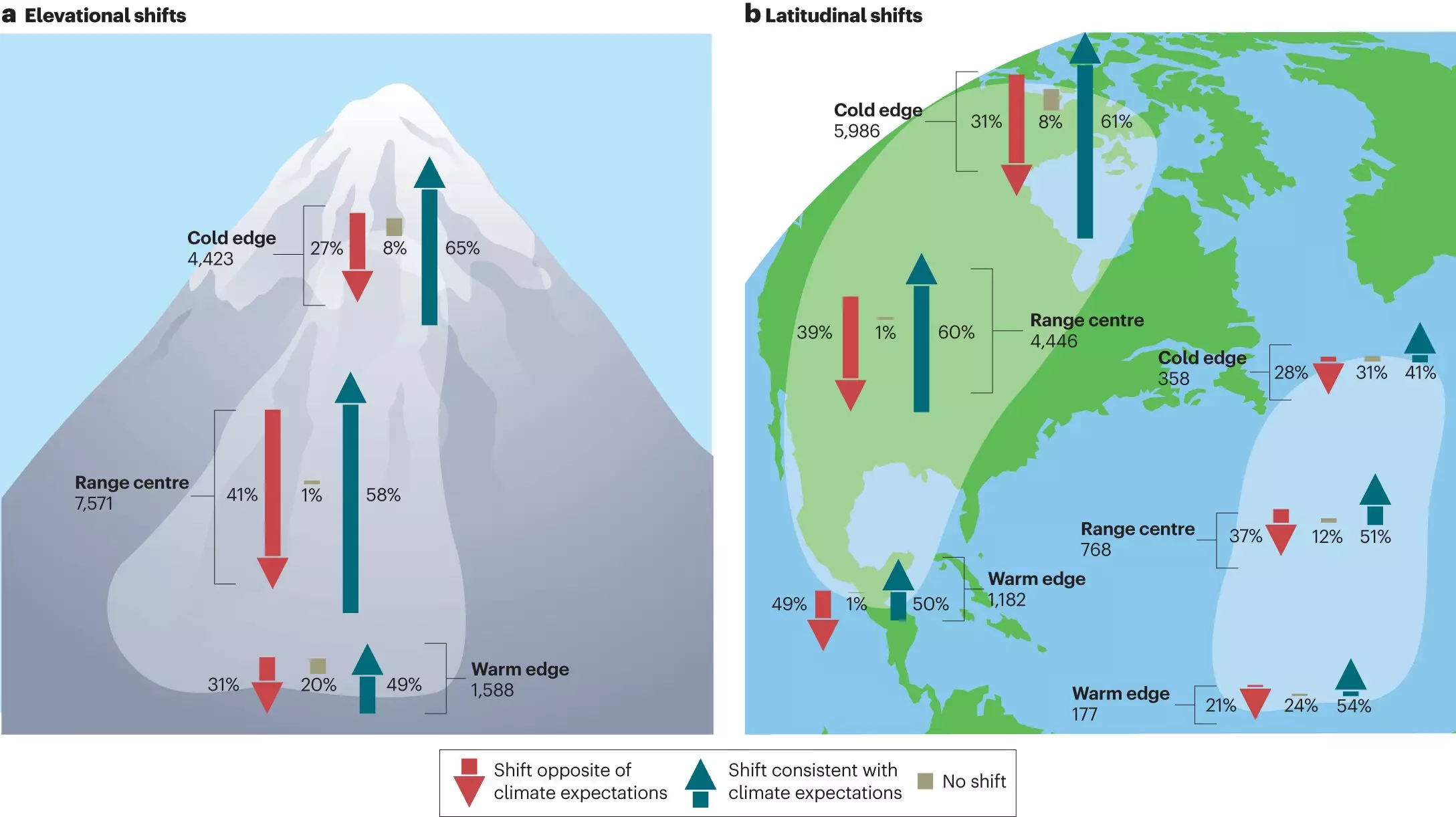As global temperatures rise, the shifting habitats of countless species present an urgent challenge for environmental management and public health. While it’s well-established that many organisms are moving towards cooler regions, the details are far more intricate than a simple northward or upslope migration dictated by warming climates. Recent research conducted by an international team led by McGill University has brought to light the multifaceted nature of these range shifts, revealing that temperature alone cannot fully explain where and how species relocate.
The sheer scale of this phenomenon is daunting: thousands of species across various taxonomic groups have been tracked over recent decades, revealing a complex picture. On the one hand, about 59% of species exhibit the expected movement towards cooler climates. On the other, a staggering 41% either stay put or move in directions that defy temperature-driven expectations. This complexity suggests that climate warming, while a crucial factor, operates within a web of biological and environmental influences that determine species’ responses.
Beyond Temperature: The Hidden Factors Shaping Movement
One of the most compelling insights from the McGill-led study is the realization that the dynamics of species migration cannot be untangled solely by monitoring temperature. Life history traits—such as reproductive cycles, dispersal abilities, and habitat specificity—play pivotal roles. For example, species with slower growth rates or limited mobility face natural constraints in relocating, even when their current habitats become inhospitable. Additionally, the physical landscape itself—barriers like mountains, urban areas, or fragmented habitats—can channel or prevent movement altogether.
These factors are critical not just for predicting if a species will move, but also how and where. Some species may favor corridors that offer refuge or specific resources, while others might establish isolated populations in unexpected places. This diversity in migration patterns requires a nuanced approach to conservation and resource management. Simply assuming uniform range shifts based on temperature trends risks mismanagement or ineffective policy, with potentially severe ecological and socioeconomic consequences.
Implications for Human Health and Economy
Species shifts are not just academic curiosities; they have tangible impacts on human societies. The movement of disease vectors such as mosquitoes and ticks introduces illnesses like malaria and Lyme disease to new geographical areas, often catching local healthcare systems unprepared. With these diseases expanding their reach, public health policies must adapt rapidly to evolving threats that do not respect political or administrative boundaries.
Moreover, changes in the distribution of commercially important fish stocks are reshaping economies dependent on fisheries. As fish migrate to cooler waters or new regions, conventional fishing zones may become depleted, creating conflicts over resources and disrupting livelihoods. Trade disputes and regulatory challenges emerge when species cross jurisdictional lines, underscoring the need for international cooperation informed by accurate ecological forecasts.
Geographic and Data Gaps Undermine Predictive Models
A critical limitation highlighted by the researchers concerns the unevenness of data collection. Most research has concentrated on temperate zones like Europe and North America, regions characterized by distinct seasonal cycles. This geographic bias leaves significant uncertainty for tropical or marine ecosystems, where climatic patterns and species behaviors differ substantially.
Furthermore, the taxonomic focus on birds and insects means that many plant species, marine organisms, and other lesser-studied groups remain poorly understood in terms of climate-driven range shifts. Since vegetation, fish, and marine ecosystems play foundational roles in global biodiversity and economic activities, this data gap hampers holistic conservation planning.
The lack of comprehensive, globally representative data impairs our ability to develop effective predictive models and adaptive strategies. Without continuous and broad monitoring, scientists and policymakers risk relying on assumptions that may not hold true across various ecosystems and species.
The Urgent Need for Enhanced Monitoring and Adaptive Management
Given these complexities, a vital takeaway from the McGill study is the imperative for expanded and diversified monitoring efforts. Enhancing global databases with more inclusive data—covering marine systems, tropical regions, and a wider variety of species—is essential. Only then can models better anticipate species’ responses to ongoing climate change and guide practical interventions.
This process demands commitment at multiple levels: from governments willing to fund large-scale biodiversity surveillance, to the scientific community embracing interdisciplinary research, and to local stakeholders engaged in adaptive resource management. Rather than clinging to outdated assumptions of static species distributions, environmental strategies must evolve to accommodate the dynamic realities imposed by a warming planet.
Ultimately, the study underscores that responding to biodiversity shifts is not just an ecological necessity but a socio-economic challenge intertwined with health, livelihoods, and international relations. Recognizing and embracing this complexity is the first step toward building resilience in an uncertain future.

